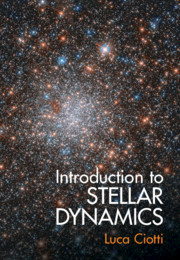6 - The N-Body Problem and the Virial Theorem
from Part II - Systems of Particles
Published online by Cambridge University Press: 28 May 2021
Summary
The N-body problem, the study of the motion of N point masses (e.g., stars) under the mutual influence of their gravitational field, is one of the central problems of classical physics, and the literature on the subject is immense, starting withNewton’s Principia (e.g., see Chandrasekhar 1995). Conceptually, it is the natural subject of celestial mechanics more than of stellar dynamics; however, experience suggests that some space should be devoted to an overview of the exact results of the N-body problemin a book like this. In fact, due to the very large number of stars in stellar systems, stellar dynamics must rely on specific techniques and assumptions, and one may legitimately ask which of the obtained results hold true in the generic N-body problem; for example, these exact results represent invaluable tests for validating numerical simulations of stellar systems. The virial theorem is onesuch result, and in this chapter we present a first derivation of it, while an alternative derivation in the framework of stellar dynamics will be discussed in Chapter 10.
Keywords
- Type
- Chapter
- Information
- Introduction to Stellar Dynamics , pp. 105 - 123Publisher: Cambridge University PressPrint publication year: 2021



